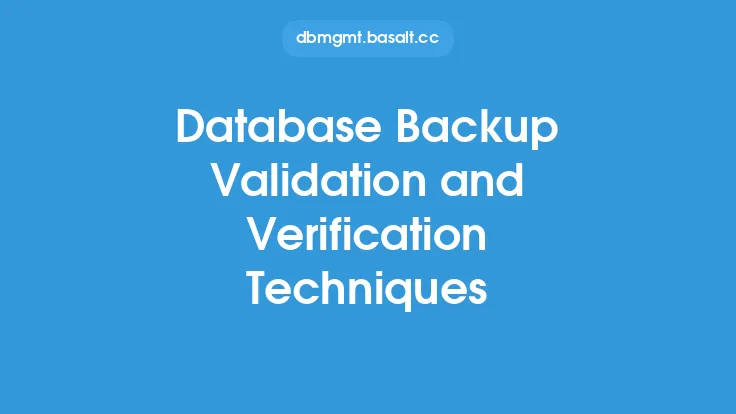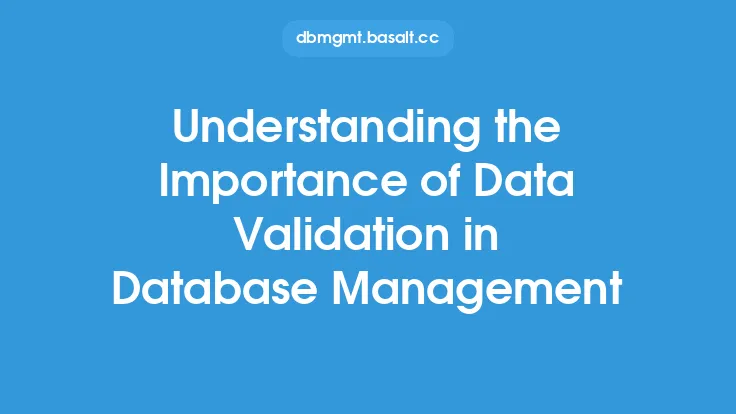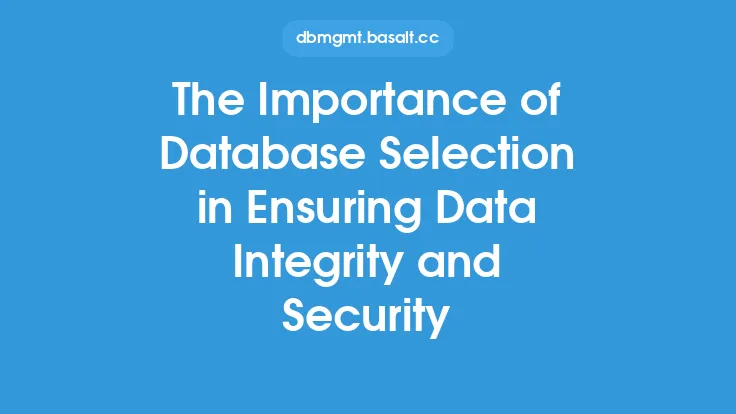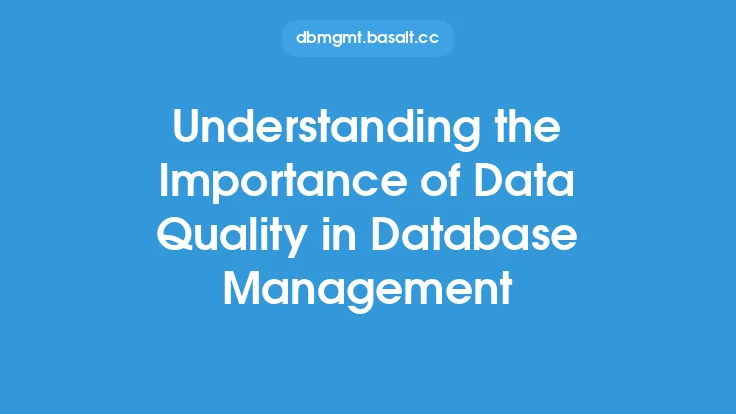Database backup is a critical component of any data management strategy, as it ensures that valuable data is protected against loss, corruption, or other disasters. However, simply creating backups is not enough; it is equally important to validate and verify these backups to ensure they are complete, accurate, and can be restored in case of an emergency. In this article, we will delve into the importance of database backup validation and verification, and explore the various methods and techniques used to achieve this critical task.
Introduction to Database Backup Validation and Verification
Database backup validation and verification are two related but distinct processes that are essential for ensuring the integrity and reliability of database backups. Validation refers to the process of checking that the backup is complete and accurate, while verification involves testing the backup to ensure it can be restored successfully. Both processes are critical, as they provide assurance that the backup is usable and can be relied upon in case of a disaster. Without validation and verification, organizations may be left with backups that are incomplete, corrupted, or unusable, which can lead to significant data loss and downtime.
Why Database Backup Validation and Verification are Crucial
There are several reasons why database backup validation and verification are crucial for any organization. Firstly, they provide assurance that the backup is complete and accurate, which is essential for ensuring data integrity. Secondly, they help to identify any issues or errors with the backup process, which can be addressed before they become major problems. Thirdly, they provide a level of confidence that the backup can be restored successfully, which is critical in case of a disaster. Finally, they help to ensure compliance with regulatory requirements and industry standards, which often mandate regular backup validation and verification.
Methods for Database Backup Validation
There are several methods that can be used for database backup validation, including:
- Checking the backup log files to ensure that the backup was completed successfully
- Verifying the integrity of the backup files using checksums or other data integrity checks
- Checking the backup files for any signs of corruption or damage
- Validating the backup against the original data to ensure that it is complete and accurate
- Using automated tools and scripts to validate the backup and identify any issues
Methods for Database Backup Verification
There are also several methods that can be used for database backup verification, including:
- Restoring the backup to a test environment to ensure that it can be restored successfully
- Using automated tools and scripts to verify the backup and identify any issues
- Checking the restored data for any signs of corruption or damage
- Validating the restored data against the original data to ensure that it is complete and accurate
- Performing regular disaster recovery drills to test the backup and restore process
Best Practices for Database Backup Validation and Verification
There are several best practices that organizations can follow to ensure effective database backup validation and verification, including:
- Automating the validation and verification process using scripts and tools
- Scheduling regular validation and verification tasks to ensure that backups are regularly checked
- Using a combination of methods to validate and verify backups, such as log file checks and restore tests
- Documenting the validation and verification process and results, to provide a clear audit trail
- Continuously monitoring and improving the validation and verification process, to ensure that it remains effective and efficient
Common Challenges and Pitfalls
Despite the importance of database backup validation and verification, there are several common challenges and pitfalls that organizations may encounter, including:
- Lack of resources and budget to dedicate to validation and verification
- Insufficient expertise and knowledge to perform effective validation and verification
- Complexity of the backup environment, which can make validation and verification more difficult
- Over-reliance on automated tools and scripts, which can lead to complacency and a lack of manual checks
- Inadequate documentation and auditing, which can make it difficult to track and verify the validation and verification process
Conclusion
In conclusion, database backup validation and verification are critical components of any data management strategy, as they ensure that valuable data is protected against loss, corruption, or other disasters. By understanding the importance of validation and verification, and by using a combination of methods and techniques, organizations can ensure that their backups are complete, accurate, and can be restored in case of an emergency. By following best practices and avoiding common challenges and pitfalls, organizations can ensure effective database backup validation and verification, and provide a high level of assurance that their data is safe and protected.





